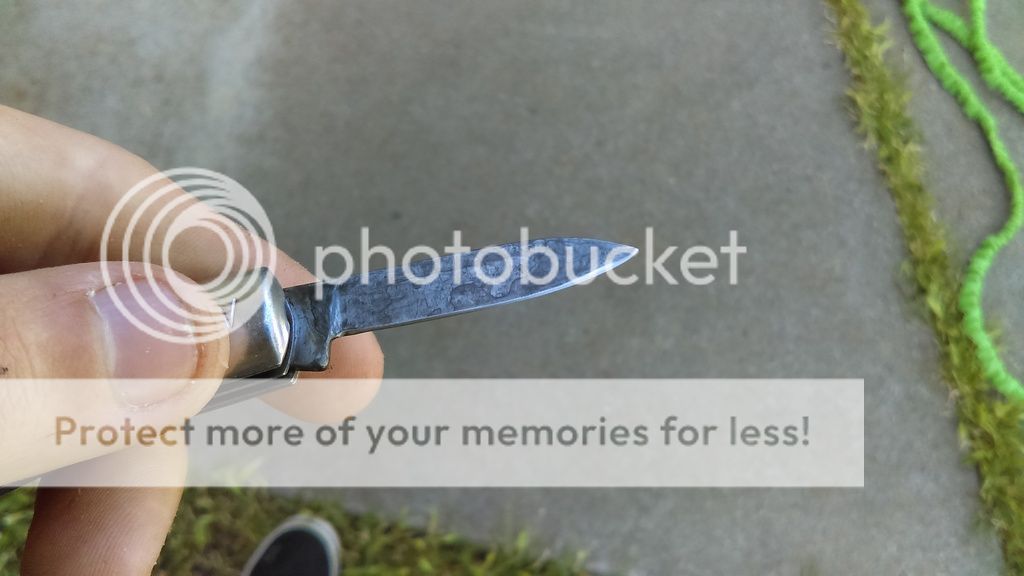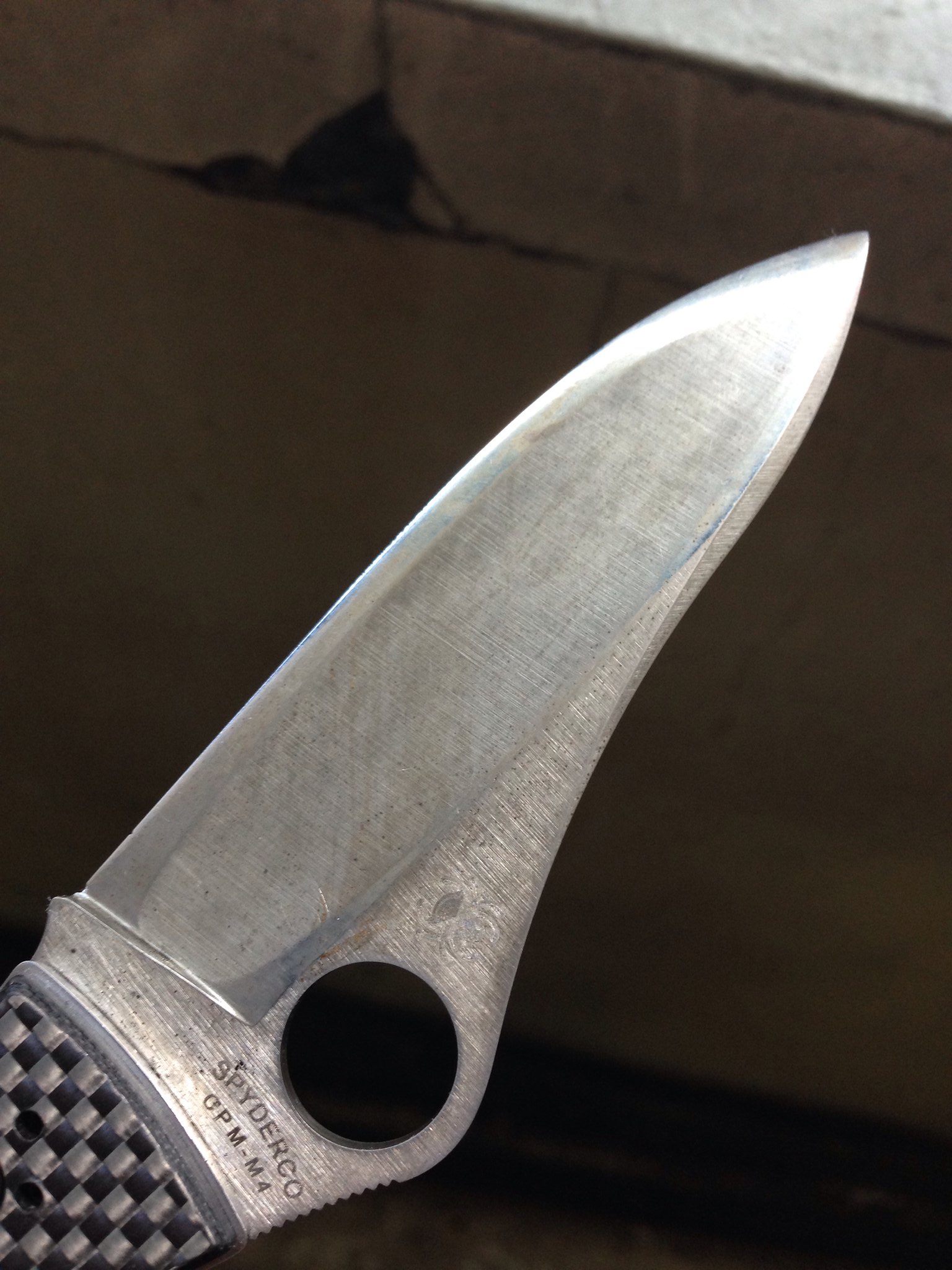-
The BladeForums.com 2024 Traditional Knife is available! Price is $250 ea (shipped within CONUS).
Order here: https://www.bladeforums.com/help/2024-traditional/
You are using an out of date browser. It may not display this or other websites correctly.
You should upgrade or use an alternative browser.
You should upgrade or use an alternative browser.
To patina, to not patina? That is the question
- Thread starter Sande5412
- Start date
Best patina comes from use.
Zieg
I see what you're saying, but if the 'use' doesn't come from cutting acidic stuff, you're not going to end up with the right kind of oxide on the blade. With moisture and salt air you'll get the crummy kind of brown rust.
But it isn't that hard to cut up some lemons or pickles with your new knife.
I had a friend that put loose towing chains into the bed of any new truck he bought before he even drove it off the lot. A few miles later and any future guilt about the paint on the bed was gone.
Exactly. "The things you own end up owning you." This quote is from the movie Fight Club and it couldn't be any more true. People are so scared of scratching their knives (other items too) that they can't truly enjoy them without the fear of damaging them.
The day I got my first rock chip on my brand new car it wasn't the most fun, but the more chips you get and the older the car gets you don't have to care as much and not worry and just enjoy the ride! :thumbup:
This guy has it all figured out...

Hickory n steel
Gold Member
- Joined
- Feb 11, 2016
- Messages
- 20,731
When I got this old imperial jackmaster Barlow, the unused clip blade had this natural patina on it
But the pen blade had a bad sharpening in its lifetime, so I fixed it and stuck it into an orange for 1-1/2hr then sharpened it up.
On this one knife I have a good example of both types of patina, and you can really see the difference.
They both look nice so it doesn't really matter, but a forced patina is a good way to go if you want to protect it from rust.
You could also blue your knife if you wanted.

But the pen blade had a bad sharpening in its lifetime, so I fixed it and stuck it into an orange for 1-1/2hr then sharpened it up.

On this one knife I have a good example of both types of patina, and you can really see the difference.
They both look nice so it doesn't really matter, but a forced patina is a good way to go if you want to protect it from rust.
You could also blue your knife if you wanted.
Just FYI - "cold blue" is not an oxide and doesn't protect from rust. So if you want to "blue" your knife for protection, that means either a gunsmith's hot blue salt tank, or do a hot water blue that involves boiling and steel wool carding. Neither are going to work if you can't take your knife apart.
"Patina" is about the closest thing you can get to a blue on a knife that is permanently assembled.
"Patina" is about the closest thing you can get to a blue on a knife that is permanently assembled.
Hickory n steel
Gold Member
- Joined
- Feb 11, 2016
- Messages
- 20,731
Just FYI - "cold blue" is not an oxide and doesn't protect from rust. So if you want to "blue" your knife for protection, that means either a gunsmith's hot blue salt tank, or do a hot water blue that involves boiling and steel wool carding. Neither are going to work if you can't take your knife apart.
"Patina" is about the closest thing you can get to a blue on a knife that is permanently assembled.
I didn't know that ! ( even if it doesn't protect it it'll still look nice )
Thanks for the info 👍
- Joined
- Feb 24, 2011
- Messages
- 4,423
Great patinas, gents! I think I'll let it develop naturally on my new Bradley 2.
The only way to do it IMHO... :thumbup:
- Joined
- Oct 8, 2010
- Messages
- 8,340
- Joined
- Oct 8, 2010
- Messages
- 8,340
- Joined
- Mar 7, 2001
- Messages
- 4,608
Had similar issues with my GB1, as posted here (also to introduce the 'official' GB1 thread http://www.bladeforums.com/forums/showthread.php/714931-Gayle-Bradley-Hard-Use/page21
So far so good.
Previously:

Now:

See the bluish tone on the mirrored part.
So far so good.
Previously:

Now:

See the bluish tone on the mirrored part.
Here's a pic of a forced patina on two blades. They're black.
I soaked them in apple cider vinegar overnight. The gassing that it creates caused some light surface corrosion on the bolsters that I took off with some polishing. I had the knife vertical, blade down in vinegar, and the gas went up, hitting the bolster.
Patina keeps blades from rusting, it's definitely a handy thing. Some people don't like them because they don't like the look, personally I love watching a patina develop on my knives over time.

Connor
I soaked them in apple cider vinegar overnight. The gassing that it creates caused some light surface corrosion on the bolsters that I took off with some polishing. I had the knife vertical, blade down in vinegar, and the gas went up, hitting the bolster.
Patina keeps blades from rusting, it's definitely a handy thing. Some people don't like them because they don't like the look, personally I love watching a patina develop on my knives over time.

Connor







